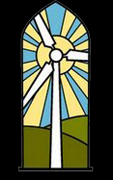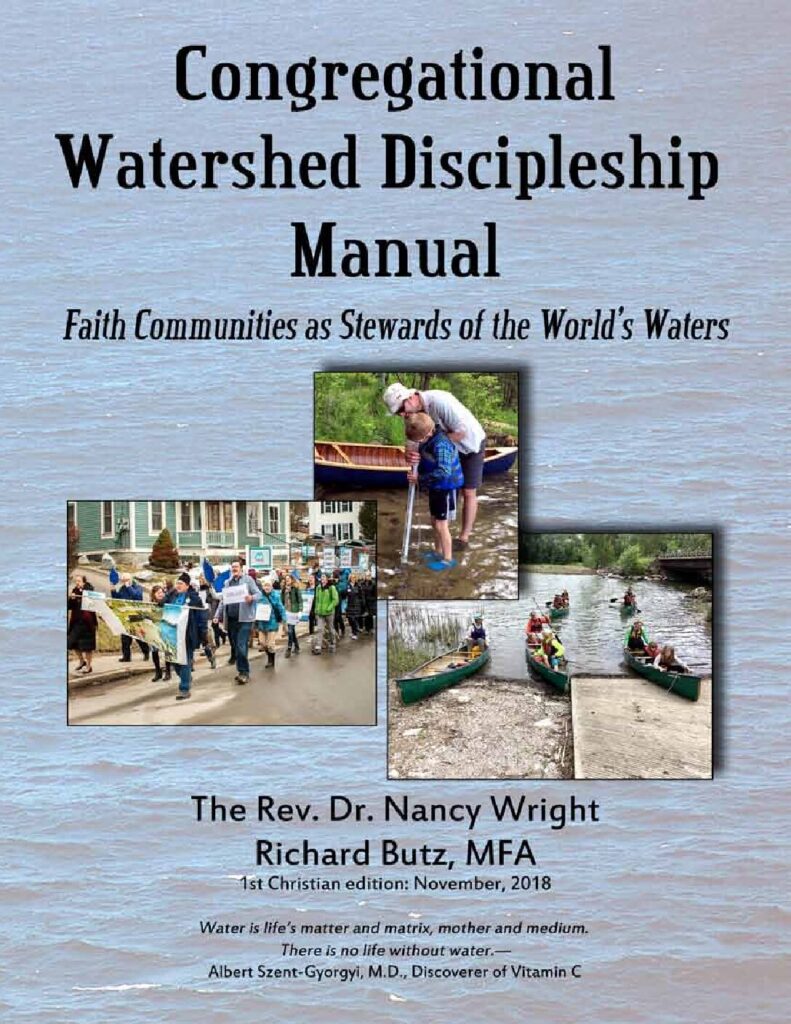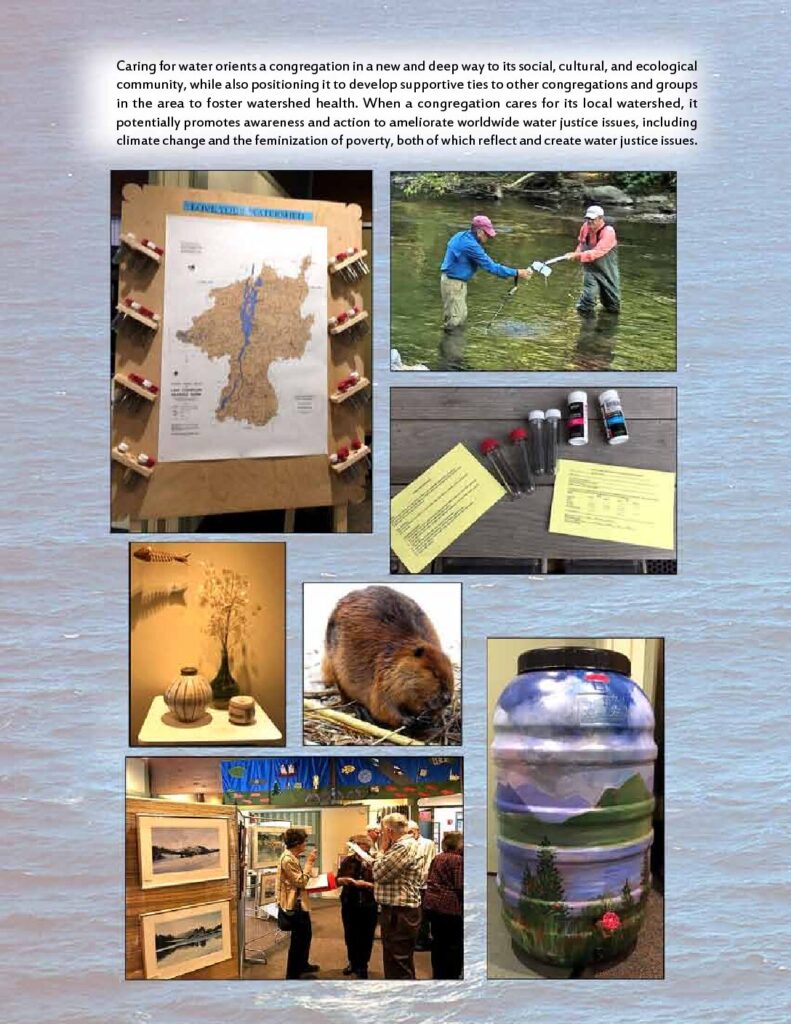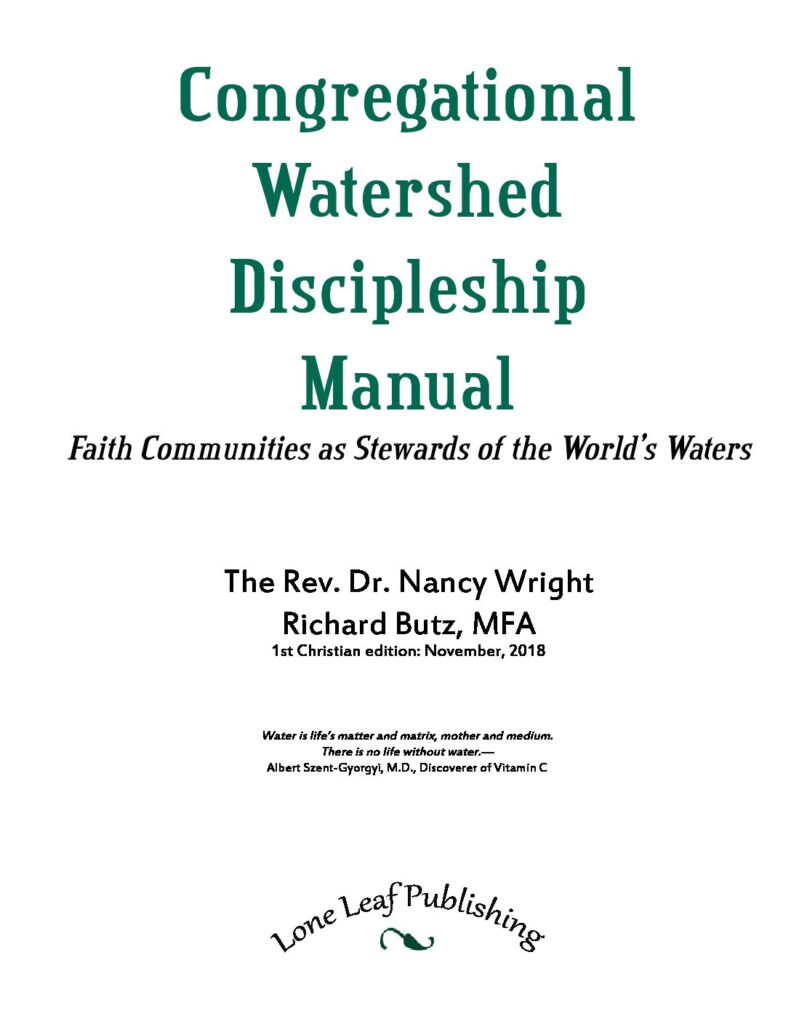
Vermont’s 2024 Environmental Common Agenda
Vermont Conservation Voters, of which Vermont Interfaith Power and Light is a partner, has issued the Environmental Common Agenda for 2024. Your guide to this year’s top
legislative priorities for the environment can be downloaded here:
From the Bookshelf

A new feature - from time to time, we will use this space to share a book review from members of Vermont Interfaith Power and Light's Board. Our introductory offering is from Board Member Harris Webster, whose ideas this was. It includes his reflection on this project and an initial review.
Introduction
This is a part of a series (hopefully) of book reviews of full length books dealing with the central issue of our times, the Climate Emergency. Before we start writing specifically about a certain book, I want to make a general request. If you are reading this specific review on VTIPL’s website, I assume you are a dedicated climate activist, both individually taking steps to reduce your own carbon footprint and collectively engaging in efforts to change our social systems to reduce carbon emissions into our Earth’s atmosphere and other actions to protect Earth’s land and water resources.
I ask this question: How many full-length books have you read dealing with the Climate Emergency compared to other full-length books? Writing a full-length book requires tremendous energy, lots of research, lots of thinking, and I find reading such a book motivates and enhances my further action. I’ve also observed that such reading enhances one’s own and other folk’s activism. Yes, I believe that reading only a few or no such books is a sign you are missing one important means for both understanding the nature of the crisis and motivating your action for mitigating such a crisis.
Happy reading.
The Ministry for the Future by Kim Stanley Robinson
Book review by VTIPL Board member Harris Webster
Kim Stanley Robinson’s “The Ministry for the Future” is unique in that it is a science fiction novel about a future humanity might experience, not a non-fiction analysis of the past, present, and future of humanity. A friend told me about her positive impression of Kim’s words, positive in the sense of that the author’s words contained a somewhat hopeful outlook for the future despite the overwhelming dangers projected if humanity fails to sufficiently reduce carbon emissions. As a result, I learned about, purchased, and read this fiction book.
I was somewhat surprised and very pleased with the effectiveness of Stanley’s approach. Though fiction, this novel is based on a careful analysis of current scientific studies. It is neither naively optimistic nor utopian about our future. I thank my friend for suggesting I check out Kim Stanley Robinson.
Don’t worry, I won’t give away the complicated plot other than to say one of the key, non- romantic relationships (sorry romance plays just a minor role in this novel) concerns a man traumatized by the horrendous consequences resulting from a future climate disaster and a woman international civil servant undertaking an uncharted leadership role of heading a newly created, relatively powerless UN-created Ministry for the Future. The Ministry’s monumental task is to deal with the climate emergency. I found I had more background to understand some of the ‘Ministry’s’ efforts than others, but I found that this fact was actually beneficial. Also being a sort of a peacenik, I found the analysis of the role that violence might play in our probable unstable future both challenging and interesting. And overall, the ending probably has more positive elements of hope, than despair.
Just to enhance my essentially positive view of this science fiction novel, I’ll conclude this review by quoting a few of the book’s promotional comments.
Ezra Kein (Vox) “If I could get policymakers, everywhere to read just one book this year, it would be Kim Stanley Robinson’s 'The Ministry for the Future.'”
(American Scientist) “The ‘Ministry for the Future’ says that yes, the world can be saved—but only at a cost that so far we have been unwilling to pay.”
(NPR) “Our moral challenge is climate change. It is a subject of a great new book. “The Ministry of the Future” --- Bursting with ideas on every page, this novel raises inconvenient questions about overcoming climate change. The happy news is that Robinson is utopian enough to think it is not too late to revolutionize our way of living.”
Download "NO GOOD REASON:
Vermont's Regulatory Roadblocks to Renewable Energy and Our Fight
Against Climate Change," a June 2023 report from Renewable Energy Vermont here:
A Reflection from VTIPL Board Member Rebecca Kneale Gould
This essay first appeared in The Addison County Independent on June 29, 2023 as part of the “Ways of Seeing” series and is republished here with permission.
Seeing is (and is not) Believing
By the mid-afternoon of June 7th, Manhattan was shrouded in a thick, toxic, orange haze of wildfire-induced particulate matter. I was worried about my New York friends and reached out in concern. “No walk on the Brooklyn Bridge today!” one friend somewhat jauntily replied. “It feels downright apocalyptic here” said another, apparently less invested in dispelling my distress. “It’s unreal,” exclaimed my third correspondent, one who often struggles with asthma. But oh, how very real it was. The orange factor turned out to be all about optics and wavelengths, but it was nonetheless starkly visible. Meanwhile the daily views my friends were accustomed to were nowhere to be seen.
In an email to a fellow writer, I enacted an effortful reach for a silver-lining:
“The only ‘positive’ element in an event like this (my fervent hope anyway) is that maybe when apathetic people actually SEE what our climate emergency looks like, it might spur them into action.” Then I added, “Based on past history I’m not that optimistic, but you never know!” Looking back at this email with a couple of weeks of hindsight, I see a classic, tripartite hope-despair-hope structure that has come to typify my climate change communication patterns. I actively resist a posture of Only Doom. But let’s be honest, as far as the hope-despair-hope sandwich is concerned, the outer slices are getting progressively thinner, while the unpalatable filling grows correspondingly thick.
If I thought I would get a response, I might ask the orange haze a few questions. Is seeing believing? If so, will the believing that comes from seeing finally kick the inactive into passionate action? And how much action, at what levels of power-brokerage, will be necessary to turn the massive ship of fossil-fuel dependence ever so slightly in a more sustainable direction?
I ask these same questions of myself almost daily. It gets exhausting. So for your sakes and mine, dear readers, let me now take this meditation in a slightly different direction — but with seeing and not-seeing as our continued motif.
Why is it that some people truly need visual evidence to assert that something is true? Why do others prefer to live in a context where a certain degree of mystery remains? Such people tend to follow Emily Dickinson’s exhortation to “tell the truth, but tell it slant.” Now, as a scholar, writer and teacher, I go first for clarity. In terms of how I like to experience the world, however, I want to stay open to indirection and allusion. I was reminded of this tendency in two separate conversations last week— one with a clergy colleague and another with a “spiritual, but not religious” friend. In each case, a certain phrase from the Episcopal Book of Common Prayer sprang to mind and to speech: the description of a sacrament (such as baptism) as an “outward and visible sign of inward and spiritual grace.” To me, this phrase captures perfectly the essence of what it means to “see” with senses other than sight, a way of experiencing the world around us that is akin to contemplative practice. For those of us who are lucky enough to have good vision, consciously cultivating the other four senses can yield unexpected fruit (but this game works in any number of ways, depending on the sense that you rely upon the most). The broader point is to encounter the world indirectly, discovering, perhaps, that indirection can have transformative potential.
An example will help. For me, as was certainly the case for Dickinson, a sense of “inward and spiritual grace” often comes by way of birdsong. To be sure, in the visual realm, there are few things as thrilling as spotting the first flash of a redwing blackbird in early spring, or apprehending the sheer magnificence of a great blue heron as it rises aloft from a thicket of cattails, displaying its massive wingspan. But thanks to my Cornell Ornithological Lab’s “Merlin” App I have begun to “see” birds in a deliciously different way. With the aid of “Merlin,” I can now query over and over “Wait, was that an oven bird?”; “Did I just hear a pine warbler?” in ways that would likely drive a human companion right ’round the bird-lover’s bend.
Somehow, as I become able to identify more and more species of birds, I begin to feel more richly companioned. In my daily observations, I move from “Wow, this morning there’s a lot of beautiful birdsong!” (appreciative, but rather abstract) to:
“Those must be the same little phoebes who hatched just last week.”
“That song sparrow is no longer afraid of the sheep.”
“Are the crows just kibitzing or are they pestering our beloved barred owl?”
As my ears become more sharply attuned to the flocks and families living all around me, I experience the world as more “peopled” in a way that any introvert would celebrate: gentle company, at a reasonable distance, expecting little of me and musically virtuosic to boot!
Like many of you, when I grow weary and fearful of the state of our world, I turn to my immediate natural surround as a way to stay grounded. But the irony of this appraoch is certainly not lost on me when I consider the extent to which the climate crisis occupies the center of that weariness and fear. Floods, fire and extreme heat threaten to destroy our crops and our food systems and in ways that will only exacerbate existing inequities. But the climate crisis also threatens to destroy the sacred spaces and holy sounds upon which we rely for our spiritual sustenance. Rachel Carson presciently noted precisely this when she warned against a massive loss of bird species in Silent Spring.
I move through our present climate reality with deep ambivalence. Sometimes I stare directly at the toxic orange hazes of our own making and ponder how I’m called to respond. But sometimes I give these horrors a necessary side-long glance, a glance— I hasten to add— that is substantively and ethically different from “turning a blind eye.” I pause long enough to be restored by song: bird song, frog song, sheep song, even every now and then a human song. Then it’s back to looking reality in the face and taking up our many causes— grateful, always, that underneath an inward and spiritual grace abides.
Rebecca Kneale Gould is a writer and Associate Professor of Environmental Studies at Middlebury College, focusing on comparative religion and the environmental humanities.
(A pdf version of this essay is available here: WOS Seeing is Believing June 2023)
Further Reflections from VTIPL Board Member Rebecca Kneale Gould
As I sat down to the task of writing this column, I wondered whether I could write about anything other than water. But there’s an old writer’s adage that you “write what’s in front of you.” At the moment, what is in front of me runs (literally) from soaking wet to persistently damp. Regular readers will remember that in my June column I was primarily worried about wildfire smoke and its physical and spiritual effects. Then came July.
The harsh reality is that this summer is emerging as a no-holds-barred Climate Chaos Summer. The rain throughout Vermont is that unwelcome visitor that refuses to leave regardless of invitations that begin with coy politesse and progress to utter desperation. “Who cares what you think?” the rain seems to say, “I’m going to hang around indefinitely. If you ask me to leave one more time, I’ll drop six inches of rain over Middlebury in a matter of hours.” Yes, friends, it was quite possibly All My Fault.
If I were living in Arizona, however, I would be jumping for joy should something resembling a rain cloud appear in the heavens. Anything to break the relentless heat. By 4 pm today (August 8th) it will be 107 in Phoenix. Believe it or not, that is calm, cooling news. In the month of July, residents of greater Phoenix endured 31 consecutive days of 110 degrees Fahrenheit or higher. Stepping imaginatively into the shoes of my Arizonan brothers and sisters, I can see myself trapped for an excruciatingly long month between two impossible choices: stay inside or venture out into a kind of heat that is not just oppressive, but deadly. It goes without saying that these two choices are only available to those who are privileged enough to have some kind of temperature control in their homes. For some, there is no choice. If I lived in Phoenix, things would not be going well for me, even in the most air-conditioned contexts. By comparison, life in Vermont feels soggily sane.
It is good to start your day in a state of gratitude and I do — and usually in ways that are more creative and affirming than “at least I’m not in Phoenix.” Indeed, the worse things get, the more I tend to up my gratitude practices. I have been well taught by any number of spiritual guides (including my sheep) that beginning one’s day with gratitude is a wonderful way to stay open to the beauty before us, behind us, above us and all around us. Beginning the day with gratitude is a central concept in religious practices from the Navajo/Diné Blessingway Prayer (that I have just evoked) to the ancient Jewish practice of beginning the day by uttering blessings of gratitude. You start by expressing gratefulness that your soul has returned to your body, which is to say: you wake up, you realize that you are not dead, you give thanks. Gratitude begins with the basics and the blessings in the daily prayer book include blessings for the gift of sight, the gift of strength against weariness, even the gift that your basic bodily functions are reasonably intact. Ancient wisdom teaches us not to take anything for granted.
But even with these gratitude practices, I am making my way through the summer in a state of ambient grief. Climate grief is a bit like the many rain clouds of this wet Vermont summer: grey, persistent, sometimes tear-filled, always hovering. While the June wildfire smoke certainly got to me, the heartache amped up in early July. In the midst of our first flood event, I was poised to go to Massachusetts and was already two days late. When I-89 finally opened up and it was deemed safe to travel, I threw a bright yellow life jacket into the back seat of my car. I wryly wondered if this would become a common travel strategy. The sun was out, the valleys shimmered with an iridescent green and the village of Hinesburg looked all shined-up and post-card perfect as I started my journey. Then came Richmond. Where you would normally find the Park and Ride, there was an enormous, brown lake. Cars were scattered everywhere, water rising to the rooflines. Five minutes later, I encountered the Winooski river. Was this wild muddy torrent even a river? I experienced it as a crazy, high-tide ocean forcing itself through a very narrow flume. Luckily, I saw it from what some highway official had deemed “a safe distance.” My nervous system felt otherwise.
Further down the road, I gazed on houses and fields, all flooded, mostly lost. Home. Food. These are the essentials that keep us warm, healthy and happy. Overnight, they were gone. “This is terrible. This is terrible.” I repeated to myself over and over until I made it past Barre and into New Hampshire, where the sun and some semblance of exterior normalcy returned.
But interior normalcy is another matter. For weeks, I have felt like Coleridge’s Ancient Mariner, needing to tell and retell the tale of my Massachusetts journey should I encounter someone who maybe wants to hear it (most people don’t). “If I’m feeling this way,” I wonder aloud, “What must it be like for the citizens of Barre whose homes have been entirely decimated?” But the reality is that I have the luxury to feel this grief because I am not pumping water out of my basement and wondering if my home will be condemned or make me sick from mold. In the midst of emergencies, you basically cope and leave the feelings for later.
Am I beyond grateful that my own home and family were unscathed by the first flood, and the second and the third? Absolutely. The Buddhist teacher and activist, Thich Nhat Hanh, was famous for reminding his students to celebrate each day that starts without a toothache. In a similar vein, I daily celebrate the miracle of every ordinary, unflooded summer morning. But when you’ve been working on climate issues since the late 1980’s some days are harder than others. You wonder if you have made a difference. Or enough of one. You wonder what’s around the corner: next week, next summer, in another few years.
What to do? Rise, bless, thank. Help, work, bless and thank again. Rest. Protest. Play. Hug a sheep. Buy a sump pump. Check on a neighbor. Look for the helpers. Laugh at something. Repeat. Those are my strategies. And don’t forget to vote.
This essay first appeared in The Addison Independent on August 2, 2023, and is reprinted ere hwith their permission.
A pdf version can be found here:
Inflation Reduction Act Resources Available
Learn more about some of the new federal resources, rebates, and incentives available to individuals, houses of worship, non-profits, and businesses thanks to the recently-passed Inflation Reduction Act (IRA). Inflation Reduction Act Resources
We are grateful to Vermont Energy & Climate Action Network (VECAN) for compiling these in a succinct format. The information on the link will be updated as additional resources become available.

Third Act: Older Vermonters Protest Climate Change, Protect Democracy
They - or we! - fought for civil rights, marched against the Vietnam War, saw Richard Nixon resign his presidency, and started the Second Wave of Women's Liberation. That was the “first act.” Tending to their private lives was the “second act.” Now, they are organizing again for their “Third Act” - nationally and in Vermont. Nationally, Third Act is a new movement founded by Bill McKibben and led by an advisory council with extensive experience in organizing and activism. Third Act is enlisting people over the age of 60 to come back and protest how our country is not addressing the climate crisis and threats to our democracy. The timing is right, as ten thousand people reach 60 every day and elders control a large part of the country's wealth. During its first year, Third Act has had phenomenal growth; there are eleven regional working groups.
Expressing his appreciation to Third Actors, McKibben wrote: “Thanks for the enormous efforts of the last year, from writing postcards to marching to going to jail. Third Actors accomplished enormous things: blocked pipelines, helped pass massive climate legislation, freed up hundreds of millions of dollars for heat pumps, and provided the margin in narrow elections. You've helped redeem our faith in the goodness of people and the possibility that we can work together for the common good….”
Get involved and learn more here: Third Act
Visit the Vermont Chapter at Third Act Vermont
UVM Prof. Jon Erickson’s New Book, “The Progress Illusion” & Discount to VTIPL Friends
VTIPL encourages you to read UVM Professor and Ecological Economist Jon Erickson’s new book, The Progress Illusion: Reclaiming Our Future from the Fairytale of Economics. Erickson was the keynote speaker at VTIPL’s 2022 Spring Conference with the theme, Limits to Growth: Pathways to a Sustainable Future. He says, “I wrote the Progress Illusion because I’m convinced that economics as currently taught and practiced will ensure a planetary path to ruin. The mainstream of my field tells a story centered on a very narrow caricature of humanity as greedy and independent. It’s a story that assumes the Earth is limitless and at our disposal. It’s a fairytale detached from biophysical reality and lacking a moral compass. The fate of people and planet depends on upending this illusion and writing a new story based on care, cooperation, interdependence, and stewardship.” Buy a copy from Island Press, using code ILLUSION, for a 20% discount. The book can also be ordered from your local bookseller. https://islandpress.org/books/progress-illusion
Review by Harris Webster, VTIPL Board Member
Jon Erickson, the keynote speaker at VTIPL’s April 2022’s in-person Annual Conference in Norwich VT, has just had his book, referred to above, printed. Whether you attended or not, it is a book more than well worth reading, even purchasing and re-reading. Jon’s speech at the conference contained enticing thoughts we all needed to hear, but I believe the book format brings out many more details that I needed to hear and have access to. I believe all Americans concerned about not just the climate crisis, but broader crises facing American society will find this a deeply satisfying read.
Jon, in his first chapter, explores his personal story of how he came to be an ecological economist. Too few Americans including our leaders are even aware of or pay serious attention to this exciting variation of economics based on the premise that society’s economic system is a sub-system of Earth’s ecological system, not the other way round. We all have personal stories of how we look at the world, and it was good to learn of Jon’s personal story and compare it to our own in how we learned to relate to our larger society and how we became interested in the climate crisis.
Although Jon’s field of ecological economics as a field is a fairly recent development, Jon looks at some of its roots way back in history in chapters two through four. As a history major and teacher of history in secondary schools, I have come to believe that such an historical analysis is very useful to understanding the present. Jon quotes John Maynard Keynes, “Practical men, who believe themselves to be quite exempt from any intellectual influences are usually slaves of some defunct economist.” Jon is convincing that gaining an understanding of ecological economics is vital for those of us concerned about the climate crisis.
Finally, in chapters five through seven, ‘A New Story, A New Economics, and A New Economy,’ Jon looks at the future. Concern about future is probably the main motivation most of us are concerned about the climate crisis. I’ll end this review by saying this section of the book was my favorite and gives me hope, but I was glad I chose to read the whole book in order and plan to read it again and even again.
Vermont’s Energy Future, Legislative Review & Climate Justice Alert
This legislative session that begins on January 4, 2023, and concludes in May/June 2024, is going to be critical for Vermont’s drive to significantly lower carbon emissions sustainably and equitably. Alone among the New England States, Vermont has actually been losing ground; our emissions have gone up rather than down.
We know that our biggest emitters of carbon dioxide are from the Transportation Sector (40%) and the Thermal Sector (47%). And we know that as we electrify our vehicles and buildings, the demand for electricity from renewable sources will increase dramatically.
So first let’s consider the Transportation Sector. Already Vermont has signed on to the Clean Cars and Trucks II Rule, following California’s lead to ban the sale of fossil fuel-powered cars and light trucks after 2035 and placing increasing restrictions on heavy trucks through to 2050. In Vermont ,we have in place state and federal incentives to purchase certain electric and hybrid- electric vehicles. Programs are rolling out to electrify our buses and make public bus routes more accessible and free of charge. There are funds available now for EV chargers in public places and rental properties. As the legislature considers the Transportation Bill and other related bills, we need to advocate that low-income people have access to these programs. And we need to advocate for safe streets and good sidewalks for walkers and cyclists, and bus shelters for riders.
Secondly, let’s look at the thermal sector. Two issues stand out, natural gas and fuel oil. The problem with natural gas is that it is an emitter of greenhouse gases from wellhead to furnace. Gases include carbon dioxide from burning, and methane (80 times more potent than CO2) from leaks all along the system. Some point to so called Renewable Natural Gas (RNG) from landfills, and bio-digesters that process food and animal waste and the like. But processing in this way is energy intensive and still results in methane leaks. A better way to get rid of the methane from these sites is to burn it on site to generate electricity and send that electricity right into the existing grid. It is also important to note that the amount of RNG available to Vermonters is less than 5% of the mix. RNG and natural gas, in general, are not the answer to heating our buildings.
(Editor’s note: During a recent national IPL conference call, it was noted that “having a gas stove is similar to having an idling vehicle in your kitchen.”)
Many Vermonters use fuel oils to heat their buildings - the most carbon intensive heating fuels after coal. One solution offered is to substitute increasing percentages of “responsibly”-sourced biofuels to a fuel oil mix while consumers weatherize and switch to heat pumps and geothermal sources. But biofuels have several problems. First and foremost, the sources of these fuels are largely from crops such as corn, sunflower, palm, and others that are also used for food. Thus, using them for fuel drives up food prices and availability during a time of severe food shortages worldwide. And many of these crops, such as palm, are being planted where forest once stood reducing the planet’s ability to naturally sequester carbon. Add processing and transportation and the costs go up even more. Clearly, biofuels are not the answer to heating our buildings either.
Some of us heat or supplement our heating systems with wood stoves or biomass such as pellets. This raises the issue of particulates in the air and deforestation at a time when we need forests to process our carbon dioxide from burning. It is said that it takes up to 80 years for a tree to regain the efficiency it had when it was cut. We need to increase forest coverage in Vermont and worldwide, not cut it down. Increasing our use of biomass is not the answer.
The Clean Heat Standard (CHS), that was vetoed last term had some flaws including dependency on bio-fuels, bio-mass, renewable natural gas, and questionable accounting procedures that all garnered opposition. We need to advocate for a better CHS that addresses these issues.
So what do we do to reduce our carbon footprints? A simple answer is to weatherize, strengthen building codes to enforce construction of efficient buildings, and switch to electricity for our heating and transportation sectors.
However, according to the Energy Action Network, right now, we are depending heavily on out-of-state energy such as from Quebec and other hydro (62%), nuclear (26%), and the New England Systems Mix (2.7%). Only 5.4% of our electrical energy is generated in-state, and only 2.7% is solar. The Intergovernmental Panel on Climate Change (IPCC) mandates that all new energy meet the principal of additionality, meaning it must be from new sources. According to their own reports, hydro electricity from Quebec Hydro is now “fully subscribed” so there is no new hydro available from them unless they build more, or we buy REC’s that are not actually from sustainable sources. That will also be expensive, hydro is not as clean as claimed and certainly not just, having inundated thousands of acres of tribal lands.
So where are going to get it?
The Global Warming Solutions Act, passed in 2021, mandates that Vermont meet carbon reduction benchmarks in 2025, 2030, and 2050. Some legislation has been passed, and some programs and funds are in place to help us transition to electricity for heating and transportation.
Funds are already available to weatherize buildings, and more needs to be spent to equip our technical high schools and colleges to train workers for the emerging fields of weatherizing, conducting building energy audits, installing heat pump and geothermal systems, and working in solar and wind, and electric vehicle repair. And we need to stop advising every young person to attend college when these newer trades are needed, many would do better, making good livings.
As we weatherize and construct more efficient building and drive electric vehicles, we need a new Renewable Energy Standard (RES). Passed in 2017, it mandates that at least 5% of Vermont’s renewable energy be produced in-state. (We’re presently sending 75% of our energy dollars out of state.) A revised bill under consideration would raise this to 10% by 2025, 20% by 2030, and so on. The bill must require that all energy comes from solar and wind in Vermont and from the New England System, and it needs to incentivize community solar and roof-top solar projects that build resiliency and directly benefit Vermonters. And all systems need to include battery storage where feasible.
Finally, the RES must exclude any new energy from Quebec Hydro, and Vermont utilities need to stop greenwashing their energy mix with REC’s and other devices. We need to advocate for a revised Renewable Energy Standard. Baked into all of this is the imperative to speak up for lower income and marginalized people and our workers so that they share in a sustainable future.
This all requires that we stand up to demand a better future for all Vermonters. It means actively paying attention, learning with and speaking to the people we send to Montpelier and Washington. Join advocacy groups such as VTIPL, Vermont Sierra Club, VPIRG, 350VT, Rights and Democracy (RAD), and check out “Climate Dispatch” published each Friday at vermontconservationvoters,com.
Richard Butz
Board Members, VTIPL
Download a pdf of this article here: RB 122022 Energy LTE
Vermont Interfaith Power and Light Speakers Bureau
Sermons and Workshops
Vermont Interfaith Power and Light’s interfaith Board members and Coordinator are available to give sermons, addresses, and workshops on several topics, including water stewardship, best practices for mitigating climate change, establishing a congregational Green Team, Christianity and Environmental Care, Judaism and Environmental Care, Eco-Justice, eco-spirituality, science and religion, sustainability and social justice, and more.
You do not need to be a member of VTIPL to take advantage of this offer, but, of course, membership is encouraged. Please go to www.vtipl.org for more information.
Please contact Coordinator Donna Roberts info@vtipl.org with specific requests and dates. A nominal honorarium is requested but is not required.
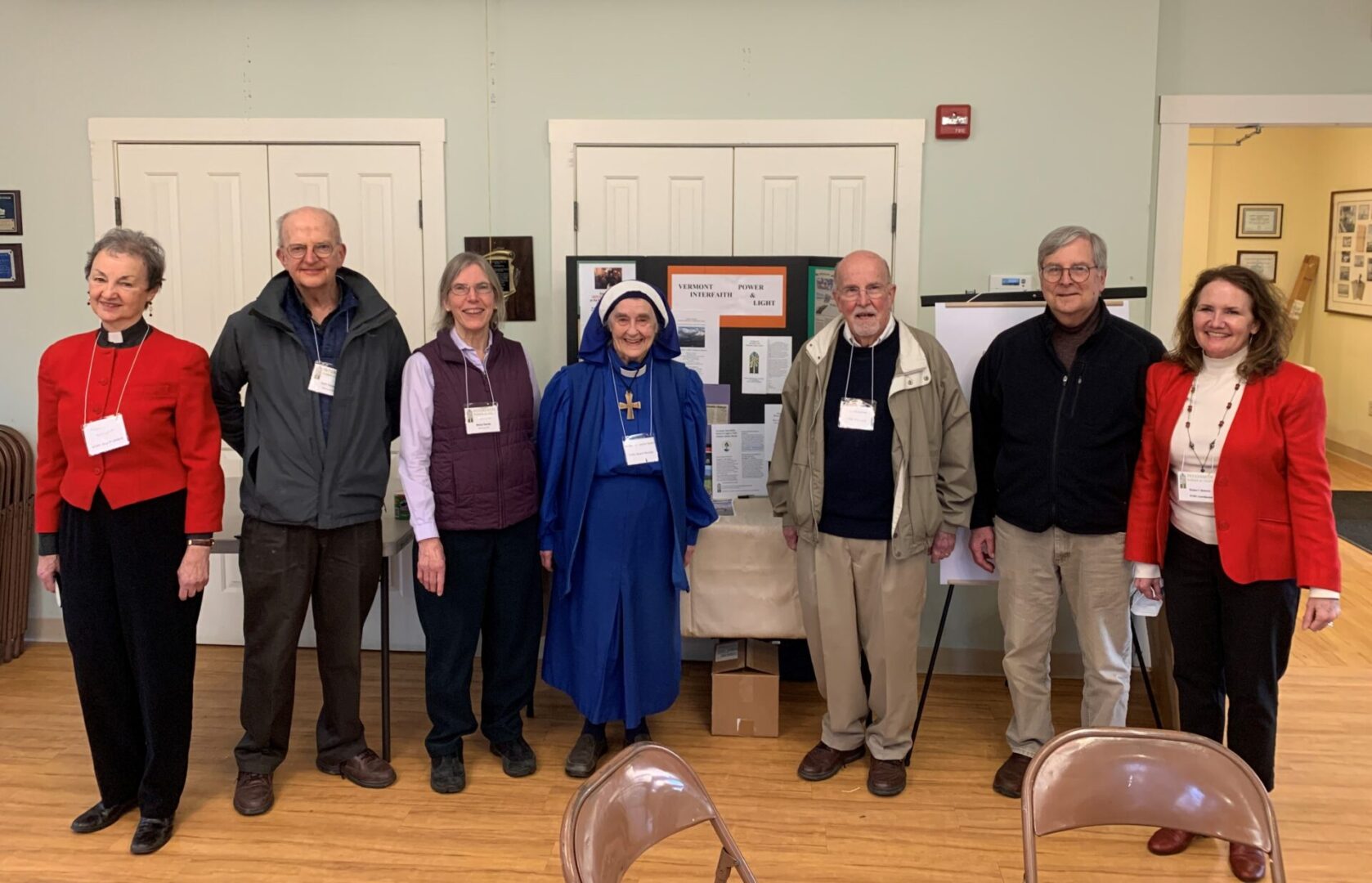
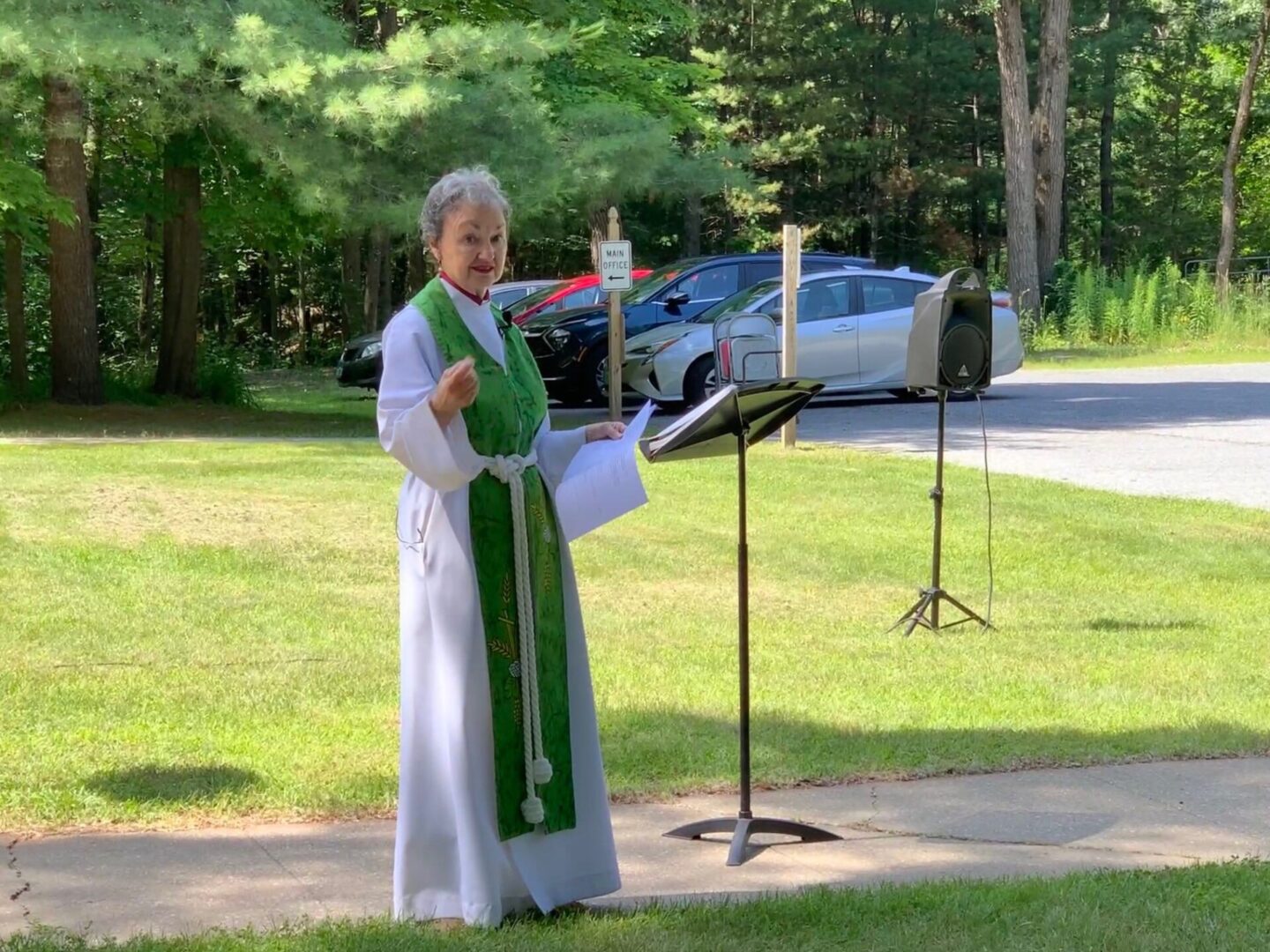
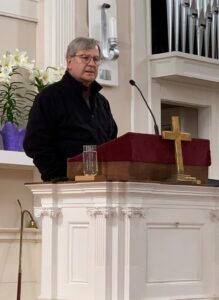
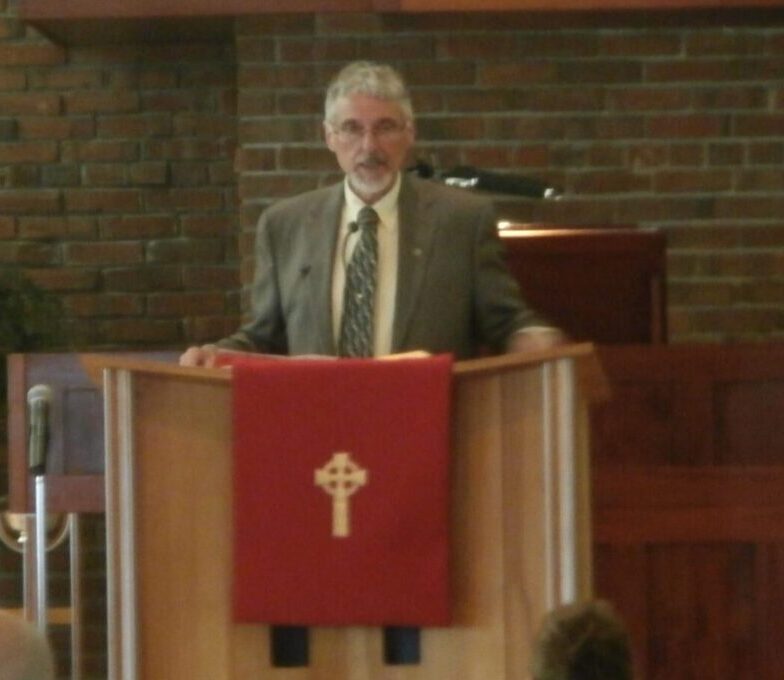
A New Resource for Drivers in Vermont's Upper Valley

Download this new buyer's guide for Electric Vehicles here:

Natural bodies of water are a precious resource. Protecting the quality of our waters is critical to the health and welfare of all beings. Those of us who maintain lawns have an opportunity to help reduce stormwater runoff into roads and storm drains, thus reducing the pollutants flowing into our lakes and streams. How is this possible? Simply by raising the blade on our lawnmowers to three inches and leaving the grass clippings on the lawn.
What do these practices accomplish?
Grass cut at three inches grows longer roots, creating air pockets that allow more rain absorption. Clippings left on the lawn break down into organic matter, serving as a natural fertilizer for healthy soils. Healthy soils act like a sponge, soaking up, filtering, and storing rainwater and snowmelt that could otherwise end up in storm drains and local water bodies.

Mowing only about one-third of the length of the grass at each mowing adds another benefit: the grass conserves energy for growing strong roots and the clippings will decompose more quickly. All these practices support lush, green lawns that survive the stresses of summer more effectively without the use of chemical fertilizers and pesticides that might otherwise pollute in local waters.
A campaign called Raise the Blade promotes these lawncare practices to homeowners, businesses, municipalities and nonprofit organizations throughout the Lake Champlain basin. To date, 5 cities and towns, 15 businesses and 5 nonprofits have joined the campaign by committing to the practices. Many of these participants post Raise the Blade lawn signs in prominent locations on their property. This sets an example for the community and helps spread the word about these simple ways to reduce stormwater runoff.
The Raise the Blade campaign would like to invite members of faith communities and houses of worship to consider adopting the recommended practices for their lawns. If you would like more information, or to obtain a Raise the Blade lawn sign free of charge, please contact Linda Patterson of Lake Champlain Sea Grant at linda.patterson@uvm.edu or phone 802-734-2617.
* Raise the Blade campaign is part of Lawn to Lake, a collaboration of regional and state organizations devoted to water quality protection by reducing stormwater runoff and building healthy soils. Partners include Composting Association of Vermont, Cornell University Extension, Lake Champlain Basin Program, Lake Champlain Committee, Lake Champlain Sea Grant, State University of New York Plattsburgh, University of Vermont Extension, and Vermont Department of Environmental Conservation.
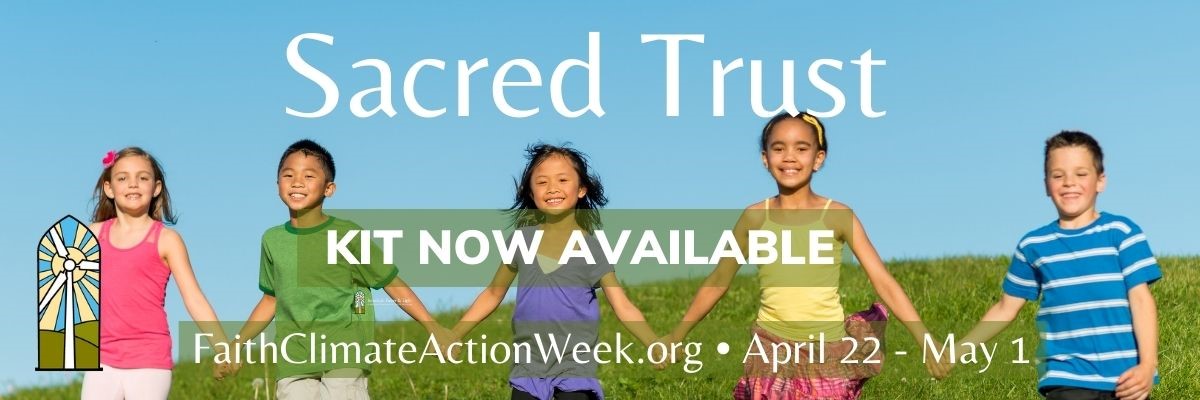
From the national IPL
Plan ahead for Earth Day: The 2022 Faith Climate Action Week printed organizer’s kit is now available! The resources in this kit will equip you to lead faith-based discussion and action at your congregation to safeguard a thriving Earth for future generations.
Faith Climate Action Week is Interfaith Power & Light’s annual program of climate-themed worship services and sermons that spans ten days of activities around Earth Day, with this year’s dates being April 22 - May 1, 2022. Join the community of people of faith preaching, teaching, and acting to heal the climate in 2022!
The theme of 2022’s Faith Climate Action Week is “Sacred Trust: Our children’s right to a livable future.” We will examine our responsibility to safeguard our Earth for future generations, and how our faiths call us to respond with bold and just solutions to climate change.
Click here to purchase your printed organizer’s kit for only $24.
The value-packed kit includes a Sacred Trust guide with information on intergenerational climate justice and the moral and legal rights of our children and grandchildren to a livable climate. There are also suggestions and resources for how to get engaged in supporting local climate justice action, and a call for art created by youth and children that envisions a positive future for our Earth through the #ImagineIPL campaign. Additionally, you will find faith-based discussion materials, suggested short films, and a Youth and Children Blessing ceremony.
Faith Climate Action Week 2022 offerings also include resources for sermons, talks, worship services, a film screening kit for the featured film, Youth v Gov, and more.
Youth v Gov is a powerful film that follows 21 young Americans suing the world’s most powerful government to protect their constitutional rights to a stable climate. The DVD, available in March, includes screening rights and a screening kit.
Click here to purchase your printed 2022 Faith Climate Action Week kit today.

An Updated Cool Congregations Program from IPL
With the climate crisis causing unprecedented disasters around the world, people are asking what can I do as one individual? The answer? Multiply your power by acting as a group with your faith community! Together we can have far greater impact.
The word holy comes from the same root as whole. And I think that is apt for the holy action we need to address the environmental crisis we face. Humans created this problem by only thinking short term, of ourselves, and not looking at the whole impacts of our actions. But when we become more expansive in our view, considering nature, considering our neighbors, we become more connected, more complete, and whole. We become more holy.
What better place to celebrate and honor the beauty of the earth than our faith communities? Join the team of inspirational Cool Congregations responding to the crisis with holy action: reducing their own carbon emissions and greening their houses of worship.
IPL’s unique Cool Congregations stewardship program helps congregations reduce the carbon footprint of their facilities in a clear step-by-step process. Join us on the path to cutting carbon and modeling clean energy solutions for our communities. And as you progress, IPL will recognize your accomplishments to amplify your impact!
Here's the path…
- Measure the carbon footprint of your house of worship, your parish school, your retreat center, or your religious organization using our NEWLY updated calculator. The NEW report format now shows your progress from year to year. And you can create and name separate reports for each building you are assessing.
- Follow the steps to reduce your carbon footprint using IPL’s Start Up Kit. Once you have reduced come back to measure again using IPL’s calculator to check your progress.
- If you have reduced by 10% or more, apply to be a Certified Cool Congregation and we’ll send you a free window decal to post in your congregation’s window and a frameable certificate announcing your accomplishment. We’ll also amplify your story on our national website and through social media to inspire others to join the team!
We hope you will accept the invitation to join the Cool Congregations team. Together we can encourage each other as we create a healthier, holier relationship with nature, and healing for the whole earth.
VTIPL Film Library of Films on the climate crisis
VTIPL has copies of these films and loans them to faith communities.
See the list of films in this downloadable PDF VTIPL Film Library
(Send email request to info@vtipl.org)
Historic Joint Statement by Ecumenical Patriarch Bartholomew, Pope Francis, and Archbishop of Canterbury Justin Welby on Climate Change
For the first time in the two-thousand-year history of Christianity, the Ecumenical Patriarch of Constantinople, the Pope of Rome, and the Archbishop of Canterbury have issued a joint statement. On September 1, His All-Holiness Ecumenical Patriarch Bartholomew, His Holiness Pope Francis, and His Eminence Archbishop Justin Welby of Canterbury published this "Joint Message for the Protection of Creation," calling for urgent action to deal with the worldwide crisis of climate change and environmental degradation. Explaining with pastoral urgency the lessons of Scripture, they issue an urgent call for an effective collective response to this global threat.
For more than a year, we have all experienced the devastating effects of a global pandemic—all of us, whether poor or wealthy, weak or strong. Some were more protected or vulnerable than others, but the rapidly-spreading infection meant that we have depended on each other in our efforts to stay safe. We realised that, in facing this worldwide calamity, no one is safe until everyone is safe, that our actions really do affect one another, and that what we do today affects what happens tomorrow.
These are not new lessons, but we have had to face them anew. May we not waste this moment. We must decide what kind of world we want to leave to future generations. God mandates: ‘Choose life, so that you and your children might live’ (Dt 30:19). We must choose to live differently; we must choose life.
September is celebrated by many Christians as the Season of Creation, an opportunity to pray and care for God’s creation. As world leaders prepare to meet in November at Glasgow to deliberate on the future of our planet, we pray for them and consider what the choices we must all make. Accordingly, as leaders of our Churches, we call on everyone, whatever their belief or worldview, to endeavour to listen to the cry of the earth and of people who are poor, examining their behaviour and pledging meaningful sacrifices for the sake of the earth which God has given us.
The Importance of Sustainability
In our common Christian tradition, the Scriptures and the Saints provide illuminating perspectives for comprehending both the realities of the present and the promise of something larger than what we see in the moment. The concept of stewardship—of individual and collective responsibility for our God-given endowment—presents a vital starting-point for social, economic and environmental sustainability. In the New Testament, we read of the rich and foolish man who stores great wealth of grain while forgetting about his finite end (Lk 12.13–21). We learn of the prodigal son who takes his inheritance early, only to squander it and end up hungry (Lk 15.11–32).
|
Widespread floods, fires and droughts threaten entire continents. Sea levels rise, forcing whole communities to relocate; cyclones devastate entire regions, ruining lives and livelihoods. Water has become scarce and food supplies insecure, causing conflict and displacement for millions of people. We have already seen this in places where people rely on small scale agricultural holdings. Today we see it in more industrialised countries where even sophisticated infrastructure cannot completely prevent extraordinary destruction.
Tomorrow could be worse. Today’s children and teenagers will face catastrophic consequences unless we take responsibility now, as ‘fellow workers with God’ (Gn 2.4–7), to sustain our world. We frequently hear from young people who understand that their futures are under threat. For their sake, we must choose to eat, travel, spend, invest and live differently, thinking not only of immediate interest and gains but also of future benefits. We repent of our generation’s sins. We stand alongside our younger sisters and brothers throughout the world in committed prayer and dedicated action for a future which corresponds ever more to the promises of God.
The Imperative of Cooperation
Over the course of the pandemic, we have learned how vulnerable we are. Our social systems frayed, and we found that we cannot control everything. We must acknowledge that the ways we use money and organize our societies have not benefited everyone. We find ourselves weak and anxious, submersed in a series of crises; health, environmental, food, economic and social, which are all deeply interconnected.
These crises present us with a choice. We are in a unique position either to address them with shortsightedness and profiteering or seize this as an opportunity for conversion and transformation. If we think of humanity as a family and work together towards a future based on the common good, we could find ourselves living in a very different world. Together we can share a vision for life where everyone flourishes. Together we can choose to act with love, justice and mercy. Together we can walk towards a fairer and fulfilling society with those who are most vulnerable at the centre.
But this involves making changes. Each of us, individually, must take responsibility for the ways we use our resources. This path requires an ever-closer collaboration among all churches in their commitment to care for creation. Together, as communities, churches, cities and nations, we must change route and discover new ways of working together to break down the traditional barriers between peoples, to stop competing for resources and start collaborating.
To those with more far-reaching responsibilities—heading administrations, running companies, employing people or investing funds—we say: choose people-centred profits; make short-term sacrifices to safeguard all our futures; become leaders in the transition to just and sustainable economies. ‘To whom much is given, much is required.’ (Lk 12:48)
This is the first time that the three of us feel compelled to address together the urgency of environmental sustainability, its impact on persistent poverty, and the importance of global cooperation. Together, on behalf of our communities, we appeal to the heart and mind of every Christian, every believer and every person of good will. We pray for our leaders who will gather in Glasgow to decide the future of our planet and its people. Again, we recall Scripture: ‘choose life, so that you and your children may live’ (Dt 30:19). Choosing life means making sacrifices and exercising self-restraint.
All of us—whoever and wherever we are—can play a part in changing our collective response to the unprecedented threat of climate change and environmental degradation.
Caring for God’s creation is a spiritual commission requiring a response of commitment. This is a critical moment. Our children’s future and the future of our common home depend on it.
1st September 2021
Ecumenical Patriarch Bartholomew
Pope Francis
Archbishop of Canterbury

A New Resource from The Greek Orthodox Archdiocese of America

Greening the Parish: A Resource Page for Environmental Stewardship
The Department of Inter-Orthodox, Ecumenical, and Interfaith Relations has released a Greening the Parish Resource Page. Designed for both the parish and home, this page provides resource material for navigating and fulfilling our vocation as stewards of creation and working towards greening our parishes together.
Especially featured are the ecological initiatives and activities of His All-Holiness Ecumenical Patriarch Bartholomew, renowned as “The Green Patriarch” for his proclamation of “the primacy of spiritual values in determining environmental ethics and action.” Included are the September 1st Encyclicals for the Feast of the Indiction and Day of Prayer for the Protection of the Natural Environment, along with His All-Holiness’s works in global environment advocacy and action such as the Halki Summits.
Exploring a variety of practical and theological perspectives regarding environmentalism, the Creation Care Toolkit consists of Creation Care resources along with the Greening the Parish webinar series and manuals. Additionally, a variety of Orthodox perspectives are featured on the webpage including youth initiatives, books, and films along with a diverse resource section featuring the works of various Christian traditions, organizations (i.e., the United Nations, the Environmental Protection Agency, etc.), environmentalists, and academics.
This page is an effort to assist parishes and individuals to green our parishes and adopt a life of environmental stewardship.
The webpage and additional information may be found here.
Congregational Watershed Discipleship Manuals
Vermont Interfaith Power & Light (VTIPL) has created two manuals, one with a Christian emphasis, “Congregational Watershed Discipleship Manual: Faith Communities as Stewards of the World’s Waters (1st Christian Edition)” and another with an interreligious emphasis, “Congregational Watershed Manual: Religious Communities as Stewards of the World's Waters (1st Interreligious Edition).”
In 2018, Vermont Interfaith Power & Light (VTIPL) joined with local organizations to create a model for watershed stewardship based on the experience of Ascension Lutheran Church in South Burlington, Vermont. The Reverend Dr. Nancy Wright, pastor of Ascension Lutheran Church, and Richard Butz, a member of the church, are co-authors of the manuals.
These are high-resolution print copies, spiral-bound to lie flat conveniently. Print copies of these manuals are available through Pastor Nancy Wright. Contact her at pastornancy@alcvt.org.
We will be using this page to provide information and links to resources for our community to use in their response to the Climate Crisis. On this page, you will find information concerning the COVID-19 pandemic, statements in response to the murder of George Floyd and Environmental Justice, and our Vermont Interfaith Power and Light Film Library..
Vermont Public Service Department Releases A New Consumer Information Resource:
“A Vermonter’s Guide to Residential Clean Heating and Cooling”
A new, free guide produced for the Vermont Public Service Department will help homeowners navigate the process heating and cooling their homes with clean energy.
Montpelier, VT – Vermonters interested in heating their homes without fossil fuels have a new resource to help them navigate the path towards clean heating. The guide, titled “A Vermonter’s Guide to Residential Clean Heating and Cooling,” was produced by the nonprofit Clean Energy States Alliance (CESA) for the Vermont Public Service Department and is available to download for free on the Department’s and CESA’s websites.
“Vermont has seen tremendous growth in interest in switching to clean heating sources and more efficient air conditioning” noted Public Service Department Commissioner June Tierney. “As thousands more Vermonters explore the possibility of switching to advanced wood heating and cold climate heat pumps, the Vermont Public Service Department is committed to providing quality information to help them navigate the process. It is our hope that affiliated agencies and organizations will help spread the word about this helpful new guide.”
About twenty percent of Vermonter’s heating needs are met local cord wood or wood pellets and over 25,000 cold climate heat pumps have been installed in Vermont. However, nearly eighty percent of Vermonters still heat their homes by burning fossil fuels which contribute significantly to greenhouse gas emissions, are a drain on the local economy, and can worsen air quality. To align their interests in renewable, clean, and local energy with their home energy needs many Vermont homeowners are looking to transition to clean heating technologies. This guide provides information and guidance on how to make that transition.
Supporting the transition to cleaner heating and renewable energy is in-line with Vermont’s Comprehensive Energy Plan, which calls for Vermont to increase the portion of renewable energy used to heat Vermont’s building sector to 30 percent by 2025. This goal builds on the state statutory goal to weatherize 80,000 homes and reduce fuel use and utility bills by 25 percent.
This extensive 60-page guide provides in-depth coverage of clean heating and cooling technologies. It is broken into ten sections:
1) Efficiency First: This section explains the role of energy efficiency and conservation in reducing the amount of heat and electric energy used by a household. It also explains the benefits of an energy audit.
2) Why Should I Install a CH&C System in my Home? This section examines CH&C benefits and the role they play in Vermont’s clean energy goals.
3) What are CH&C Technologies? This section provides a detailed explanation of each technology. Advanced wood heating options include wood pellet boilers, furnaces, and stoves. Sections on cold climate air source heat pumps, air-to-water heat pumps, and ground source heat pumps address heating and cooling with electricity.
4) Are CH&C Systems Right for my Home? This section examines why a homeowner should consider CH&C. These options include the need for addition space heat, for hot water, or to reduce fossil fuel consumption.
5) Assessing Your Home’s Current Distribution System for Heating: This section helps the homeowner assess the method her home uses to distribute heat, such as ducted forced hot air systems, hydronic systems, or space heating units and how to choose a CH&C technology that works with that distribution system.
6) Assessing Your Home’s Current Home Heating and Hot Water Systems: This section discusses how hot water CH&C technology can supply hot water in addition to space heating and cooling or can provide hot water only.
7) Cooling Your Home: This section describes how cooling can be provided with air source and ground source heat pumps.
8) Integrated Smart Thermostats and Controls: This section highlights technology available to remotely control heating and cooling equipment and to optimize temperature settings which can maximize efficiency.
9) Selecting a Contractor/Installer and System Maintenance: This section takes a close look at the importance of a qualified contractor’s evaluation of a home’s heating needs, distribution system, and compatible CH&C technologies. It also includes guidelines for CH&C equipment maintenance.
10) Incentives and Financing: This section contains a comprehensive listing of rebates, loans, and incentives available from the Vermont Clean Energy Development Fund, Efficiency Vermont, the federal government, and utilities. Financing through home energy loans is also covered.
The guide, which complements the Department’s online information clearinghouse at energysaver.vermont.gov is available to view or download as a pdf at www.bit.ly/35NaoEf
About the Vermont Public Service Department’s Clean Energy Development Fund (CEDF)
The CEDF, at the Vermont Public Service Department, has offered a portfolio of incentives and financing opportunities to accelerate the development and production of renewable energy in Vermont over the last 14 years. Since its inception, the CEDF has awarded over $66 million in federal and state resources for renewable energy and energy efficiency in Vermont, leveraging total investments of more than $259 million in the state’s clean energy infrastructure. Learn more at http://publicservice.vermont.gov/renewable_energy/cedf.
About the Clean Energy States Alliance:
The Clean Energy States Alliance (CESA) is a national nonprofit coalition of public agencies and organizations working together to advance clean energy. CESA members—mostly state agencies—include many of the most innovative, successful, and influential public funders of clean energy initiatives in the country. CESA works with state leaders, federal agencies, industry representatives, and other stakeholders to develop and promote clean energy technologies and markets. CESA facilitates information sharing, provides technical assistance, coordinates multi-state collaborative projects, and communicates the positions and achievements of its members. For more information, visit www.cesa.org
~~~~~~~~~~~~
Andrew Perchlik
Clean Energy Development Fund
Public Service Department
802-828-4017
Interested in involving your congregation in Anti-Racism work?
One example is an Anti-Racism book group organized by Ascension Lutheran Church. Participants come prepared to comment on books they’ve have read (or webinars attended) or to listen to the others in the group about their readings. Ascension has provided the following list of suggested titles.
- The Cross and the Lynching Tree(2013). By theologian James Cone.
- Just Mercy: A Story of Justice and Redemption (2015). By the acclaimed lawyer Bryan Stevenson. Mentioned by the bishop in his recent sermon.
- Mindful of Race: Transforming Race from the Inside Out (2018). By the esteemed diversity leadership trainer and mindfulness practitioner Ruth King.
- Ibram X. Kendi’s How to be an Anti-Racist (2019). Societal. recommended by many people including Bishop Hazelwood.
- The Racial Complex, by Fanny Brewster (2019). Psychological. Recommended by Bishop Hazelwood.
- The Quest for Environmental Justice: Human Rights and the Politics of Pollution(2005). Ed. by Dr. Robert D. Bullard. On the connection between racism and environmental pollution. Bullard is an expert, considered the Father of Environmental Justice. These essays cover varied communities and ecosystems internationally.
- Why Are All the Black Kids Sitting Together in the Cafeteria and Other ConversationsAbout Race? (2017). By Beverly Daniel Tatum, PhD. (Note from Jen Burkman: “I read it about 20 years ago as part of my teacher training, and I would love to revisit it again.” Note: she read it last month and reported on it at the book group)
- My Grandmother's Hands: Racialized Trauma and the Pathway to Mending our Hearts and Bodies (2017).By Resmaa Menaken. Excellent in discussing trauma experience by both white and Black Americans in this country and the ways that trauma is carried in the body and can be healed.
You can download this list here: Anti-Racism Book Study 2020
Resources in Response to COVID-19
Resources to be used as faith communities seek to respond to the COVID-19 Pandemic are offered here. In addition, please see guidelines from the CDC at Centers for Disease Control and Prevention and updates from the Vermont Department of Health.
Faith and Care for Earth in Times of COVID-19 March 2020
As we all face such uncertain times, including social distancing, isolation – self-imposed and otherwise - we at VTIPL want to reach out to our treasured community to share some words of inspiration, and links to meaningful activities and information with which you may wish to engage. We encourage you to worship in your homes, in nature, to connect with friends and loved ones virtually, and to reach out to those who may be especially vulnerable during times of disconnection. A phone call for reassurance can make a world of difference in helping people feel less isolated.
From VTIPL Board Member Pastor Nancy of Ascension Lutheran Church:
"How we respond to the virus, with strength, compassion, scientific knowledge, and deeply grounded in our faith tradition, will strengthen us as we encounter disruptions due to climate change. I offer this meditation." https://www.lutheranworld.org/content/resource-intercessory-prayer-midst-spread-covid-19.
As a GreenFaith Fellow, Pastor Nancy appreciates how GreenFaith works internationally through interreligious leaders to address climate change and other environmental problems. This includes a new daily opportunity to connect virtually, which is also posted on the VTIPL Facebook page. Green Faith writes, “We may be physically apart. Overwhelmed and frightened by the daily news. But we are coming together in care and resilience for some spiritual respite. Will you join us for a daily call that we are hosting? We are people of faith and spirit from around the world. Join us every day this week from Monday through Friday at 4 pm Eastern time. This is to connect with each other for 30 minutes of reflection, mutual aid, and solace, together with religious leaders from different traditions, and with readings of poetry and prayer. www.Facebook.com/greenfaith
The Deep Adaptation Agenda – a Map for Navigating Climate Tragedy, by Professor Jem Bendell, offers timely insights and suggestions for how we as a human community can not only consider the climate crisis, but also move through this current moment of upheaval and transition to a new way forward. Its essence includes 4R’s that seem particularly relevant right now:
-Resilience – How do we keep what we really want to keep?
-Relinquishment – What do we need to let go of in order to not make matters worse?
-Restoration – What can we bring back to help us with the difficulties?
-Reconciliation - What could I make peace with to lessen suffering?
Here is the link to Bendell’s full paper: www.lifeworth.com/deepadaptation.pdf
Of course, we encourage everyone to stay safe by continuing to follow CDC guidelines and those issued by Vermont Health Department guidelines, to be alert for notifications issued by our state and local governments.
Finally, this prayer/poem by Kitty O’Meara offers a note of optimism for the Earth and ourselves during these difficult times:
And the people stayed home.
And read books, and listened, and
rested, and exercised, and made art,
and played games, and learned new
ways of being, and were still. And
listened more deeply. Some
meditated, some prayed, some
danced. Some met their shadows.
And the people began
to think differently.
And the people healed.
And, in the absence of people living
in ignorant, dangerous, mindless,
and heartless ways,
the earth began to heal.
And when the danger passed,
and the people joined together again,
they grieved their losses, and made
new choices, and dreamed new
images, and created new ways to live
and heal the earth fully,
as they had been healed.
We wish you all well. Stay safe and full of compassion for yourselves, your loved ones and the Earth.
Additional Resources
Environmental Justice and Pandemic Response Resources from the Unitarian Universalist Association
The UUA has a website devoted to their Green Sanctuary program with numerous resources for communities seeking to address the Climate Crisis. It can be found at https://www.uua.org/environment/sanctuary
On that site, there is a specific page devoted to resources for communities during the time of pandemic. It can be found directly at https://www.uua.org/safe/pandemics
Video message from Stated Clerk of Presbyterian Church USA
https://www.pcusa.org/news/2020/6/9/stated-clerk-says-dont-rush-get-back-church-buildi/
The Center for Disease Control (CDC) has developed Guidelines for re-opening places of worship. A pdf version of them can be doiwnloaded here: Interim Guidance for Communities of Faith_CDC
A fukkl coipy of the CDC Guidelines, which also includes other facilities, e.g. child care, camps, etc., is available at https://www.pcusa.org/site_media/media/uploads/covid-19/cdc_reopening_guidelines.pdf
A Model for Returning to Church After COVID-19 from the Presbyterian Church USA:
https://www.pcusa.org/site_media/media/uploads/covid-19/returning-to-church.pdf
The Rev. Nancy Wright, VTIPL Board Member and Pastor of Ascension Lutheran Church in South Burlington Vermont, has shared links to two Care for Creation organizations whose websites offer many resources for communities of faith. In addition, she offers a detailed bibliography which she has prepared. That bibliography is shared as a PDF which can be downloaded.
www.lutheransrestoringcreation.org
Bibliography for Care of Creation
A guide for talking with people of five different faith about Faith and Climate Change, produced by Climate Outreach and GreenFaith can be downloaded at: https://climateoutreach.org/resources/climate-change-faith/
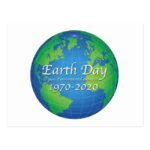
As a reminder of the spiritual foundation for our Creation Care and to honor the 50th anniversary of Earth Day, we offer this sermon delivered by a member of our board, the Rev. Nancy Wright.
Follow this link: Earth Day Sermon _Pastor Nancy Wright
Resources Available to Download
Statements on the Murder of George Floyd
and Environmental Justice
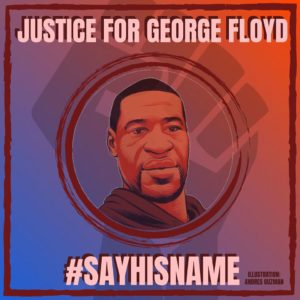
Minnesota Interfaith Power and Light
Responds to the Murder of George Floyd
Our brothers and sisters in the Minnesota affiliate of Interfaith Power and Light have issued a letter responding to the murder of George Floyd by police in Minneapolis. Their letter speaks to the people of their state, but it also is a reminder to all people of faith that environmental justice is a part of the demand for justice for all. We join with our Minnesota friends in calling all people to stand up for justice for Mr.Floyd and the human rights of people of color as well as every marginalized group of human beings in our society. You can read MNIPL's letter here.
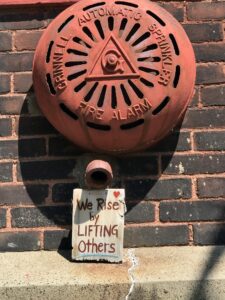
A Statement from Interfaith Power and Light
on the Murder of George Floyd
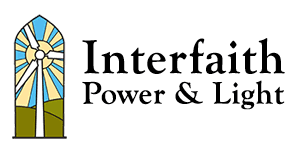
We are in a Kairos moment
Dr. Martin Luther King, Jr., in his Letter from a Birmingham Jail, wrote, "I have almost reached the regrettable conclusion that the Negro's great stumbling block in his stride toward freedom is not the White Citizen's Counciler or the Ku Klux Klanner, but the white moderate, who is more devoted to 'order' than to justice; who prefers a negative peace which is the absence of tension to a positive peace which is the presence of justice; who constantly says: 'I agree with you in the goal you seek, but I cannot agree with your methods of direct action'; who paternalistically believes he can set the timetable for another man's freedom; who lives by a mythical concept of time and who constantly advises the Negro to wait for a 'more convenient season.' Shallow understanding from people of good will is more frustrating than absolute misunderstanding from people of ill will."
The concept of time is an important one. There is "chronos" time - the kind that is set by watches and calendars; and there is "kairos" time - sometimes called "God's time" - which speaks of ripeness, of opportunity, of something that can give the present moment new meaning.
We are in a Kairos moment.
We know that there are deep inequities in our communities, in our nation, and in our world. We are not blind to the grave injustices that have existed and that are even now being further brought to light with the killing of George Floyd in Minneapolis, one of many such killings borne of systemic racism in America. We grieve with our black and brown siblings who are afraid and angry, and who seek equality and equal protection under the law.
This is a moral issue, deeply tied to white supremacy, economic injustice, voter suppression, and even climate justice. Those who suffer first and worst are those living in communities that have historically been marginalized and excluded from policymaking and opportunities for growth.
We look for hope.
While we don't condone acts of violence and destruction, we know that protest and demonstrations of solidarity can and have led to social change in our society. Our IPL Board Chair, Rev. Dr. Gerald Durley, marched with Martin Luther King, Jr. during the civil rights movement in the 1960's. He saw firsthand the power of organizing and peaceful protest in order to make constructive change.
What will we do in our Kairos moment? It is our fervent hope that by coming together, standing with one another in solidarity in this time of great suffering and challenge, that we can be the moral leaders that communities need in this time. Let's take this moment of opportunity to develop a different interpretation, rooted in a bold, meaningful vision for justice and love in our world.
With gratitude,
IPL Board of Directors
Rev. Dr. Gerald Durley – Chair
Rev. Susan Hendershot – President
The Rev. Sally Bingham – President Emeritus
Rev. Doug Bland
Morrow Cater
Rabbi Fred Scherlinder Dobb
Melissa Gavin
Gregory Lopez
Rev. Vy Nguyen
Sam Schuchat
Sarah Spengeman
Nathan Willcox
This message can be downloaded at A Message from IPL's Board of Directors_George Floyd June 2 2020
A Statement from Nebraska Interfaith Power and Light
The board and staff of Nebraska Interfaith Power & Light join with people of faith and conscience everywhere to condemn the brutal and senseless murder of George Floyd at the hands of police officers. Our mission of care for the earth and care for its people are inextricably connected. Therefore, we pledge to stand up against racism wherever it occurs and to take action to address the roots of racism wherever we can. Here are some reflections about what we can do.
The statement continues with reflections on three areas of respoinse: Listen. Lrearn, and Love. It can be read and downloaded here: Nebraska IPL Statement 6.5.2020
A Statement from Georgia Interfaith Power and Light
Sins of the Same Vine
...we must recognize that the same systems that perpetuate environmental injustices, injustices that disproportionately affect Black communities, are the very same systems that perpetuate the killing of Black people at the hands of police brutality.
It might be tempting to think that these issues are separate, especially for those of us immersed primarily in work around climate change and environmental justice, but that temptation is false. Make no mistake about it, the sinful ideologies that justify the raping and pillaging of God’s creation merely for profit grows from the same sinful vine as white supremacy, the systemic commodification of Black bodies, and the structures that perpetuate the unjust murdering of Black people at the hands of police...
Read and download the full statement here: Sins of the Same Vine
It's Up to Us to End This,
by Rev. Michael Malcom, Exec. Dir. of Alabama IPL
"Greetings Climate and Faith Leaders. I hope and pray that you're safe and well. I decided to put my thoughts to paper surrounding all that is going on in my African Diaspora world. I hope that it can help in the tension. All of this is a Human Rights issue that stems from a belief in white supremacy and a system of racism."
Rev. Malcom's full statement can be downloaded at It's Up to Us to End This
